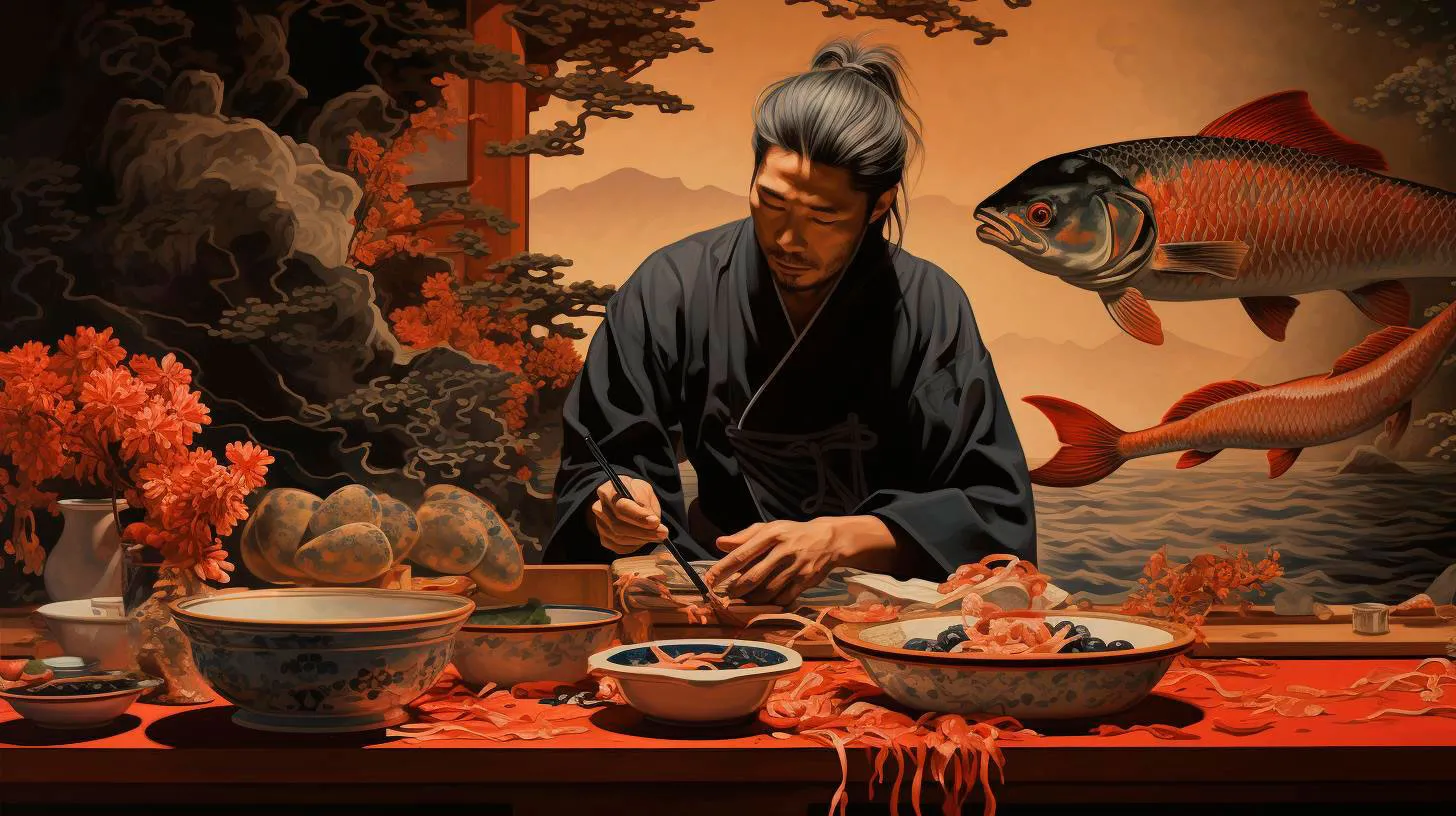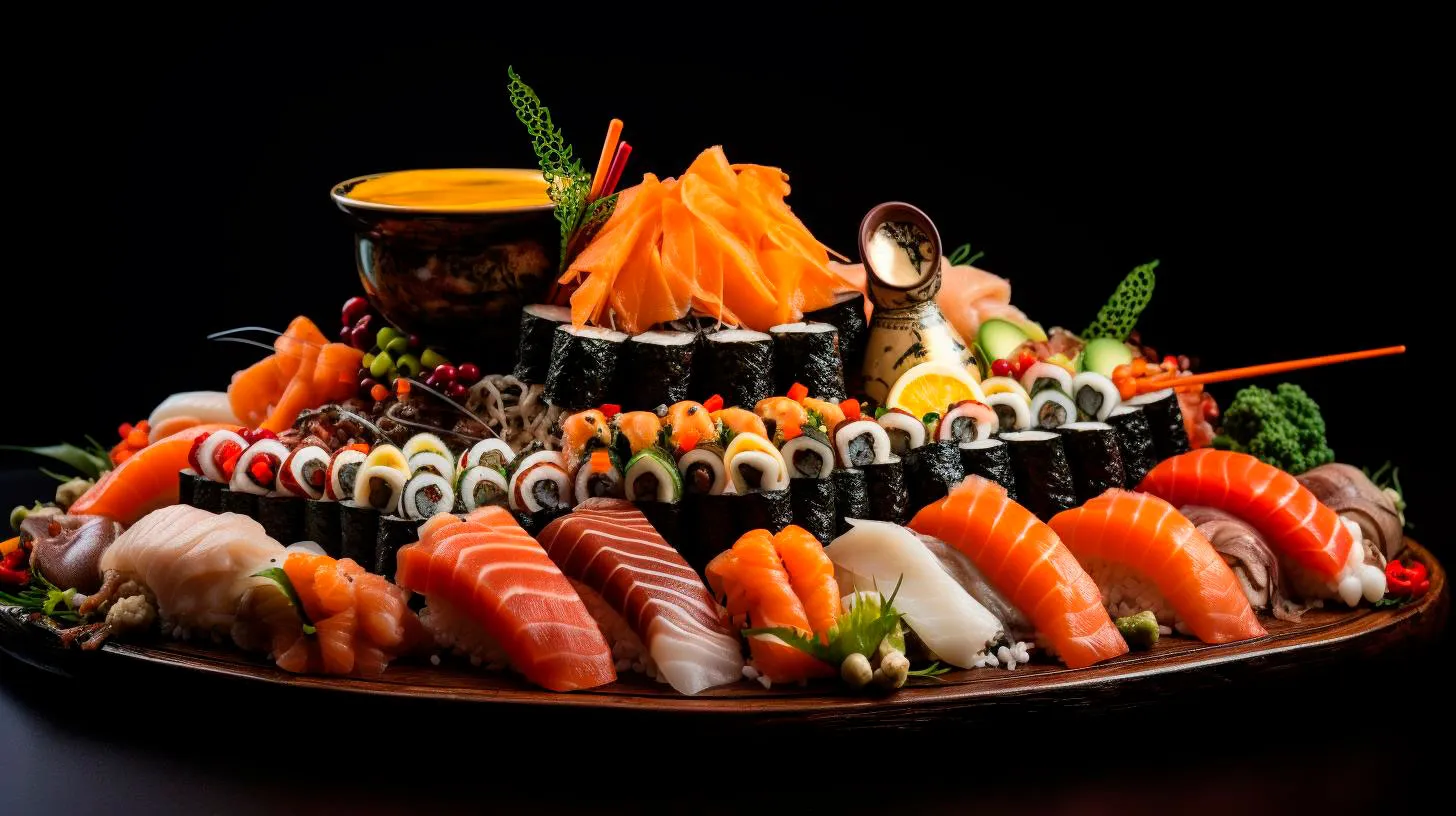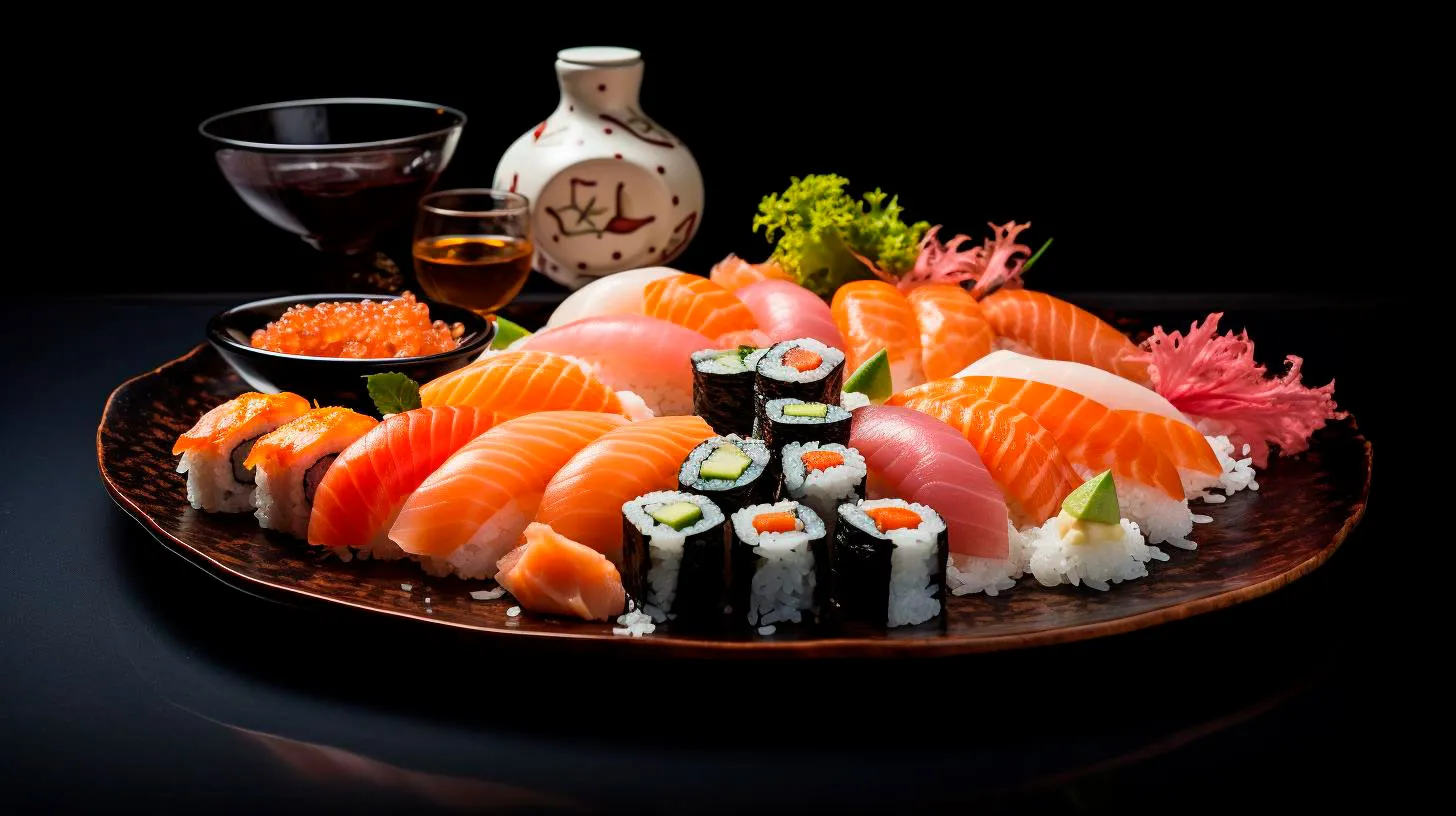From Field to Teacup: Unraveling the Essence of Japanese Tea Culture
Origins of Japanese Tea Culture
Tea was first introduced to Japan in the 9th century by Buddhist monks returning from China. They brought with them the seeds and knowledge of tea cultivation, which laid the foundation for the tea culture we know today. However, it wasn’t until the 12th century, during the Kamakura period, that tea started to gain popularity among the samurai class and the aristocracy.
During the Muromachi period in the 15th century, tea ceremonies became more formalized and evolved into a spiritual practice. Zen Buddhism greatly influenced the development of Japanese tea culture, emphasizing simplicity, mindfulness, and the appreciation of the present moment. It was during this time that the tea master Sen no Rikyu emerged, revolutionizing the way tea ceremonies were conducted.
The Japanese Tea Ceremony
The Japanese tea ceremony, also known as “chanoyu” or “chado,” is a highly choreographed ritual that celebrates the beauty of simplicity. It is a harmonious blend of aesthetics, mindfulness, and social interaction. The purpose of the tea ceremony is not merely to drink tea but to create a serene environment where guests can find harmony and tranquility.
The tea ceremony typically takes place in a dedicated tea room called a “chashitsu.” The room is designed to promote a sense of tranquility and is adorned with minimalistic decorations. Before entering the tea room, guests purify themselves by rinsing their hands and mouths to symbolize leaving behind the outside world.
The tea host, also known as the “teishu,” devotes years to master the art of tea. They meticulously prepare and present the powdered green tea, called “matcha,” with utmost care and precision. Each movement is intentional, from the way the tea utensils are handled to the way the tea is whisked.
Key Takeaway: The Japanese tea ceremony is a highly choreographed ritual that promotes mindfulness, tranquility, and social interaction.
Japanese Tea Varieties
Japan is renowned for its unique tea varieties, each with its own distinct characteristics and flavors. Let’s explore some of the most popular types:
- Matcha: Finely ground green tea powder, used in the tea ceremony and prized for its vibrant green color and rich umami flavor.
- Sencha: The most commonly consumed green tea in Japan, known for its grassy, refreshing taste.
- Gyokuro: A shade-grown tea with a mellow, sweet taste, often considered the highest quality green tea.
- Hojicha: Roasted green tea with a toasty, nutty flavor, popularly enjoyed in the evening.
- Genmaicha: A blend of green tea and roasted brown rice, creating a unique, nutty taste.
Key Takeaway: Japan offers a range of tea varieties, including matcha, sencha, gyokuro, hojicha, and genmaicha, each with its own distinctive flavor profile.
Health Benefits of Japanese Tea
Japanese tea is not only a delight for the senses but also offers numerous health benefits. Here are some of the advantages of incorporating Japanese tea into your daily routine:
- Rich in Antioxidants: Japanese green teas are packed with antioxidants, which help fight free radicals and reduce the risk of chronic diseases.
- Boosts Metabolism: The catechins present in Japanese tea can increase metabolism, aiding in weight management.
- Calming Effects: L-Theanine, an amino acid found in tea leaves, promotes relaxation and reduces stress.
- Oral Health: Certain compounds in Japanese tea have been associated with improved dental health, including reducing the risk of cavities and gum disease.
Key Takeaway: Japanese tea offers a wealth of health benefits, including antioxidative properties, metabolism boost, stress reduction, and oral health promotion.
Japanese Tea Culture in Modern Times
Despite the fast-paced nature of modern life, Japanese tea culture continues to thrive and is deeply ingrained in society. Tea ceremonies are still regularly practiced, and tea houses and gardens can be found across Japan. Furthermore, the popularity of Japanese tea has transcended borders, with matcha becoming a global phenomenon.
Today, tea is not only enjoyed as a ceremonial drink but is also incorporated into various dishes, desserts, and even cosmetics. Matcha-flavored ice cream, cakes, and lattes have become popular worldwide, showcasing the adaptability and versatility of Japanese tea.
In recent years, tea tourism has also gained traction, with travelers visiting tea-growing regions in Japan to experience tea plantations firsthand and learn about the tea production process. Visitors have the opportunity to pick tea leaves, witness traditional tea ceremonies, and deepen their understanding of Japanese tea culture.
Key Takeaway: Japanese tea culture remains vibrant and continues to evolve, with tea ceremonies, tea-inspired cuisine, and tea tourism contributing to its prominence in modern society.
Japan’s tea culture is a testament to the nation’s deep appreciation for tranquility, mindfulness, and aesthetics. From the serene tea ceremonies to the diverse tea varieties and health benefits, Japanese tea offers a glimpse into a world guided by tradition and harmony. So, the next time you sip a cup of Japanese tea, remember the journey it has undergone, from the fields to your teacup.
The Art of Japanese Tea: Discovering the Intricate Symbolic Meanings
In this article, we will explore the intricate symbolic meanings associated with Japanese tea and the captivating rituals surrounding it.
The Origins of Japanese Tea
Tea was introduced to Japan in the 9th century by Buddhist monks returning from China. Initially, tea was primarily used for medicinal purposes and was exclusively consumed by the noble class. However, over time, the tea culture spread across Japan, and tea ceremonies started to gain popularity.
The most famous form of Japanese tea is matcha, a finely ground powdered tea made from shade-grown tea leaves. Matcha is the centerpiece of the traditional Japanese tea ceremony, known as “chanoyu” or “sado.” This centuries-old ceremony is steeped in history and is considered a social, cultural, and spiritual event.
The Symbolic Meanings of Japanese Tea
Japanese tea is more than just a beverage; it represents a way of life and embodies numerous symbolic meanings. Let’s delve into some of the key meanings associated with Japanese tea:
Harmony
Harmony, or “wa,” is perhaps the most fundamental concept in the Japanese tea culture. Every aspect of the tea ceremony, from the arrangement of the tea utensils to the behavior of the guests, is carefully orchestrated to create a sense of harmony and tranquility. The tea room itself is designed to foster a peaceful atmosphere, with minimal decorations and natural elements such as tatami mats and shoji screens.
Respect
Respect, or “kei,” plays a significant role in Japanese tea ceremonies. Guests show respect to the host, who, in turn, respects the guests by preparing and serving tea with meticulous attention to detail. This sense of respect extends beyond the participants to include the tea utensils, the tea itself, and even the tea room.
Purity
Purity, or “sei,” is another important aspect of Japanese tea culture. Before entering the tea room, guests cleanse their hands and mouths to signify a fresh start and a sense of purity. The tea utensils are delicately cleaned and prepared, and the water used to brew the tea is meticulously selected to ensure its purity.
Tranquility
Tranquility, or “jaku,” is central to the tea ceremony experience. The peaceful ambiance of the tea room, combined with the rhythmic gestures of the tea preparation and the quiet sipping of tea, creates a serene environment that fosters a sense of tranquility and calmness. Participants are encouraged to leave their worldly concerns behind and immerse themselves in the present moment.
The Tea Ceremony: A Captivating Ritual
The Japanese tea ceremony is a captivating ritual that has been refined over centuries. Each element of the ceremony, from the selection of tea utensils to the preparation and serving of the tea, is carefully choreographed. Here are some key takeaway points about the tea ceremony:
- The tea ceremony reflects Japanese aesthetics, emphasizing simplicity, asymmetry, and natural beauty.
- Guests participate in a series of precise movements, such as bowing and hand gestures, to show respect and gratitude.
- The host prepares the tea with great concentration and skill, whisking the powdered tea using a bamboo whisk.
- The tea is served in handmade ceramic bowls, each uniquely crafted, adding to the overall aesthetic experience.
- Throughout the ceremony, guests engage in quiet conversation, appreciating the artistry and serenity.
The Modern Significance of Japanese Tea
While the traditional tea ceremonies remain an integral part of Japanese culture, tea has also evolved to cater to modern lifestyles. Today, Japanese tea is enjoyed in various forms, such as matcha lattes, ice creams, and even skincare products. However, the symbolic meanings associated with Japanese tea continue to hold value:
- Japanese tea ceremonies are still practiced in traditional tea houses and cultural centers, providing an opportunity to experience the art and spirituality of tea.
- Tea enthusiasts can explore the world of Japanese tea through tea tasting sessions and workshops, gaining a deeper understanding of the different tea varieties and their unique flavors.
- The Japanese principles of harmony, respect, purity, and tranquility can inspire individuals to incorporate mindfulness and appreciation for the present moment into their daily lives.
In conclusion, the art of Japanese tea is a captivating blend of tradition, spirituality, and symbolism. As you explore the world of Japanese tea, remember to embrace its rich cultural heritage, discover the hidden meanings behind the rituals, and savor the tranquility it brings.
The Symbolism of Japanese Tea: A Timeless Tradition
Tea has deep roots within the Japanese society, and it holds a sacred place in the hearts of its people. In this article, we will explore the symbolism behind Japanese tea and its significance in Japanese culture.
The History of Japanese Tea
The history of tea in Japan dates back to the 9th century when Buddhist monks introduced it to the country. Over time, tea drinking evolved from a religious practice to a social and cultural phenomenon. The ritualistic preparation and consumption of tea became an important part of Japanese society, with the establishment of tea houses and tea ceremonies.
Today, there are several different types of tea cultivated in Japan, including green tea, matcha, and sencha. Among these, green tea is the most popular and widely consumed variety.
The Importance of Tea in Japanese Culture
Tea drinking in Japan is not merely a way to satisfy thirst; it is deeply ingrained in the fabric of society. The act of serving and receiving tea holds significance beyond its literal meaning. Here are a few key aspects that highlight the importance of tea in Japanese culture:
- Spiritual Connection: Tea is often associated with Zen Buddhism and is seen as a way to achieve inner peace and tranquility. The tea ceremony, known as chanoyu, embodies the principles of harmony, respect, purity, and tranquility.
- Social Bonding: Tea ceremonies provide a platform for people to connect with one another on a deeper level. It fosters an environment of hospitality and inclusivity, where everyone is treated with respect and equality.
- Artistic Expression: The aesthetics of tea ceremonies are highly regarded in Japanese culture. From the design of the tea room to the ceramic tea utensils used, every element is carefully chosen to create an atmosphere that reflects simplicity, elegance, and beauty.
- Health and Well-being: Tea is believed to have numerous health benefits. Green tea, in particular, is known for its antioxidant properties and its ability to promote relaxation and mental clarity.
The Symbolism of Tea in Japanese Culture
Tea holds significant symbolism in Japanese culture. Each aspect of the tea ceremony implies a deeper meaning. Here are some symbols associated with Japanese tea:
Harmony
The tea ceremony promotes harmony and balance, not only in the physical space but also within oneself. It encourages individuals to find inner peace and to establish harmonious relationships with others.
Respect
The act of preparing and serving tea is a demonstration of respect. It signifies a deep appreciation for the beauty of nature, the skill of the tea master, and the guests themselves. The guest, in turn, shows respect by accepting and appreciating the tea with gratitude.
Purity
Cleanliness and purity are highly valued in Japanese culture, and the tea ceremony reflects this. There is meticulous attention to detail in every step of the tea preparation process, from the cleaning of the utensils to the purity of the water used.
Tranquility
Tea ceremonies are intimate and serene affairs, designed to create a peaceful atmosphere for both the host and the guests. The act of sitting down for a tea ceremony allows individuals to pause, disconnect from the outside world, and find tranquility in the present moment.
Key Takeaways
Japanese tea and its associated rituals are more than just a drink; they are a representation of Japanese culture and values. Here are some key takeaways:
- Tea is deeply woven into the fabric of Japanese society, with strong historical and cultural significance.
- The tea ceremony promotes harmony, respect, purity, and tranquility.
- Tea drinking provides a platform for social bonding and artistic expression.
- Tea is not only refreshing but also offers various health benefits.
- The symbolism of tea represents harmony, respect, purity, and tranquility.
So, next time you enjoy a cup of tea, take a moment to appreciate the profound and timeless traditions it embodies. The symbolism of Japanese tea reminds us of the importance of finding balance, harmony, and tranquility in our own lives.
A Journey through Japanese Tea: Exploring the Historical Significance
Join me on this journey through the world of Japanese tea, as we delve into its historical significance.
The Origins of Japanese Tea
The origins of tea in Japan can be traced back to the 9th century when Buddhist monks brought tea seeds from China. These seeds were cultivated in temple gardens, and the monks used them for tea ceremonies and medicinal purposes. Over time, tea cultivation spread throughout Japan, and it became an integral part of Japanese society.
Japanese tea can be broadly categorized into two types: Matcha and Sencha. Matcha is a powdered green tea that is used in traditional tea ceremonies, while Sencha is a steamed green tea commonly enjoyed in everyday life. Both types have distinct flavors and preparation methods.
The Significance of Japanese Tea
Japanese tea is not just a delightful beverage; it holds immense cultural and historical significance. Here are a few key points that highlight the importance of Japanese tea:
- Medicinal Benefits: Japanese tea is known for its numerous health benefits. It is rich in antioxidants, which help in boosting immunity and fighting off diseases. Drinking tea is also believed to have a calming effect on the mind and body.
- Tea Ceremonies: Tea ceremonies, also known as chanoyu, are an integral part of Japanese culture. These highly ritualistic ceremonies emphasize grace, harmony, and respect. They offer a unique insight into Japanese aesthetics and philosophy.
- Social Bonding: Tea plays a significant role in Japanese social interactions. It is a symbol of hospitality, and serving tea is considered a gesture of friendship and goodwill. Sharing a cup of tea fosters connections and strengthens relationships.
- Economic Importance: Japan is renowned for its tea production, with several regions specializing in tea cultivation. Tea exports contribute significantly to the country’s economy, and the demand for Japanese tea continues to grow globally.
Exploring Tea Regions in Japan
Japan boasts several renowned tea-producing regions, each with its unique characteristics and flavors. Let’s take a virtual tour of some notable tea regions:
Uji
Located near Kyoto, Uji is considered the birthplace of Japanese tea. The region’s fertile soil, coupled with its temperate climate, results in tea leaves of exceptional quality. Uji tea is known for its rich umami flavor and vibrant green color.
Shizuoka
Shizuoka is the largest tea-producing region in Japan, nestled at the foot of Mount Fuji. The region’s fertile volcanic soil and abundant rainfall create the perfect conditions for tea cultivation. Shizuoka tea is characterized by its refreshing aroma and delicate taste.
Kyushu
Kyushu, the southwesternmost of Japan’s main islands, is renowned for its production of Sencha tea. With a milder climate, Kyushu produces a variety of teas with unique and distinct flavors. The region’s teas are known for their sweetness and smoothness.
Key Takeaways
As we wrap up our journey through Japanese tea, let’s recap the key takeaways:
- Japanese tea has a rich history that dates back centuries, and it continues to be an integral part of Japanese culture and traditions.
- Tea ceremonies offer a window into Japanese aesthetics and philosophy, emphasizing harmony and respect.
- Japanese tea has numerous health benefits and is enjoyed for its distinctive flavors and aroma.
- The tea regions of Uji, Shizuoka, and Kyushu produce teas with unique characteristics, treating tea enthusiasts to a wide range of flavors.
So, the next time you savor a cup of Japanese tea, take a moment to appreciate the historical significance and cultural depth behind this delightful beverage. It truly is a journey worth exploring!



